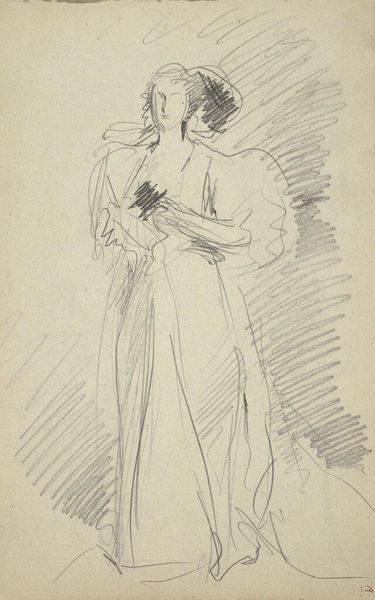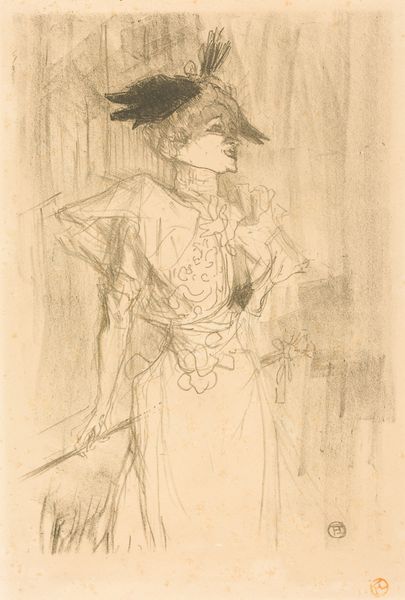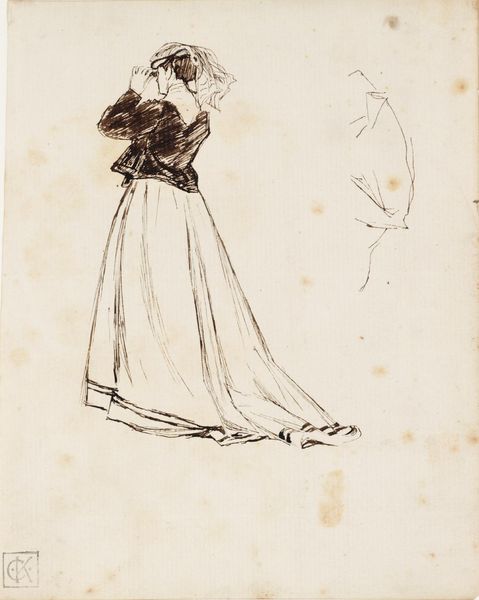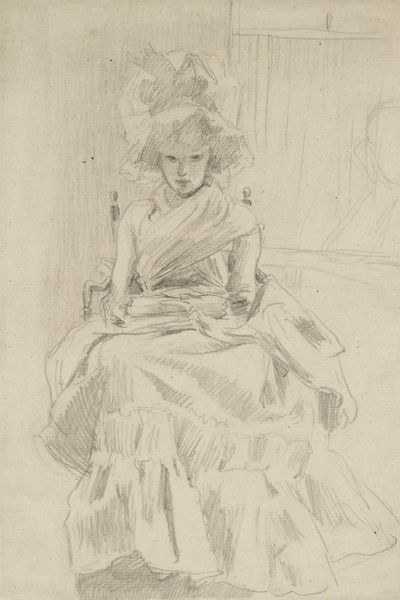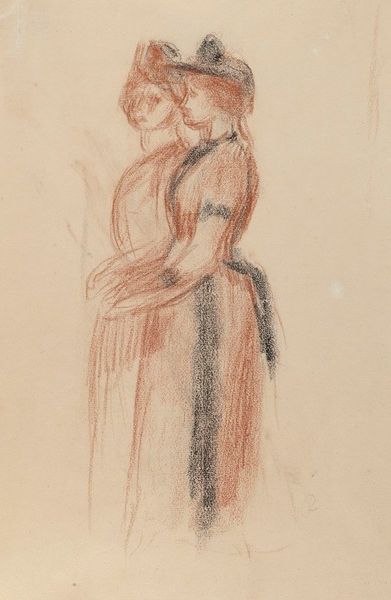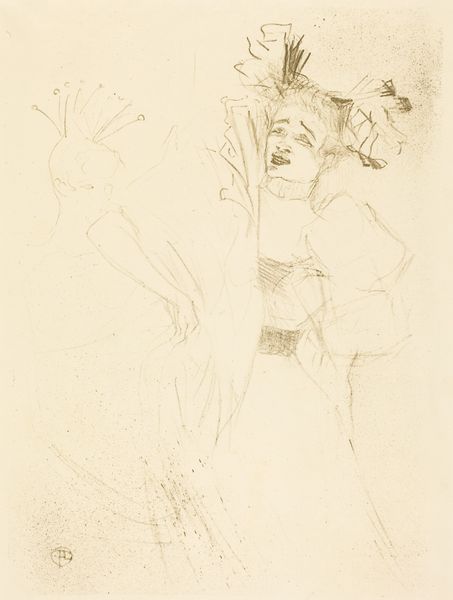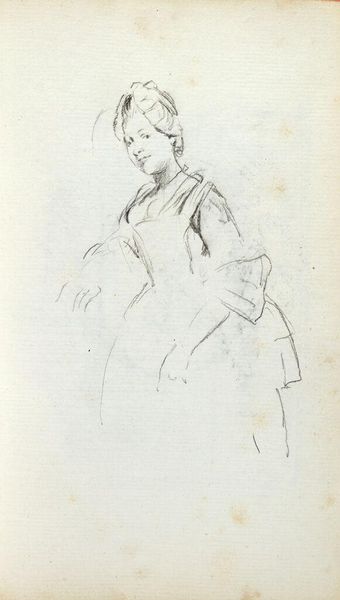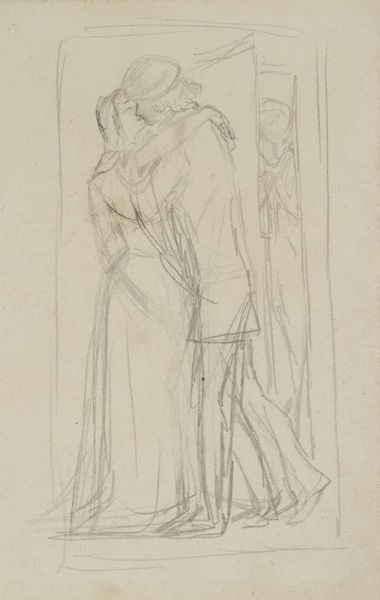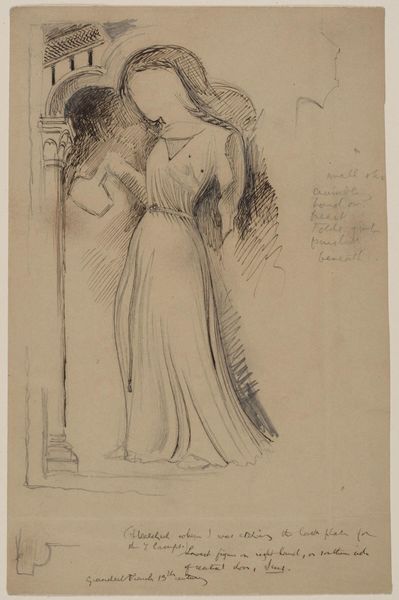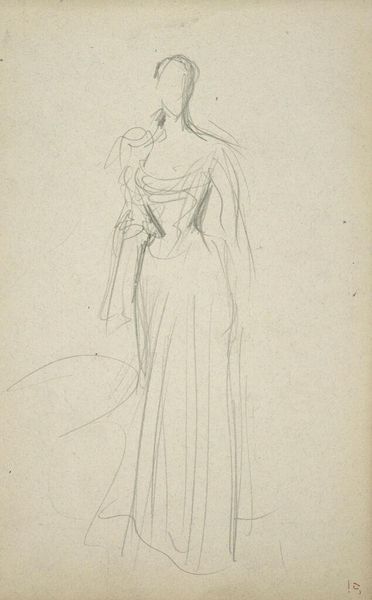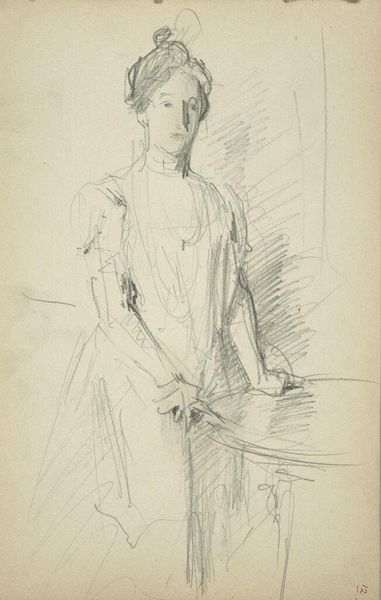
Copyright: Public Domain: Artvee
Editor: So, this is Toulouse-Lautrec's 1895 pencil drawing, "Lender and Auguez in 'The Song of Fortune.'" It’s just a quick sketch, but the woman on the right feels so animated. How do you interpret this work? Curator: This drawing gives us a glimpse into the representation of women in entertainment during that time, particularly within the lens of class and power. The subjects, being performers, already occupy a space that challenged societal norms. What do you notice about their interaction and how does it subvert traditional power structures? Editor: Well, the way the woman on the right is leaning in, almost conspiratorially, makes me think she holds some sort of power in the situation. The other figure is partly obscured, so that could reflect a power dynamic too? Curator: Exactly! Lautrec was deeply embedded in the Parisian nightlife and often depicted the nuances of such relationships. Think about the broader societal constraints of women at the time – were they given agency or confined to specific roles? This piece might subtly challenge that. He is highlighting not just their roles as entertainers, but also suggesting the potential agency and subversion of patriarchal expectations they may have cultivated through those roles. It questions the gaze itself - who is watching whom, and what does that say about the viewer's assumptions about these women? Editor: So, beyond just being a sketch of performers, it's also a social commentary on gender roles in the late 19th century? I hadn’t thought of it that way before. Curator: Precisely. Art often functions as a mirror to society, reflecting and questioning its values. Hopefully considering it through this context will help to dismantle the persistent myth of passive female subject. Editor: That’s a great perspective! I'll definitely keep this intersectional view in mind moving forward.
Comments
No comments
Be the first to comment and join the conversation on the ultimate creative platform.
